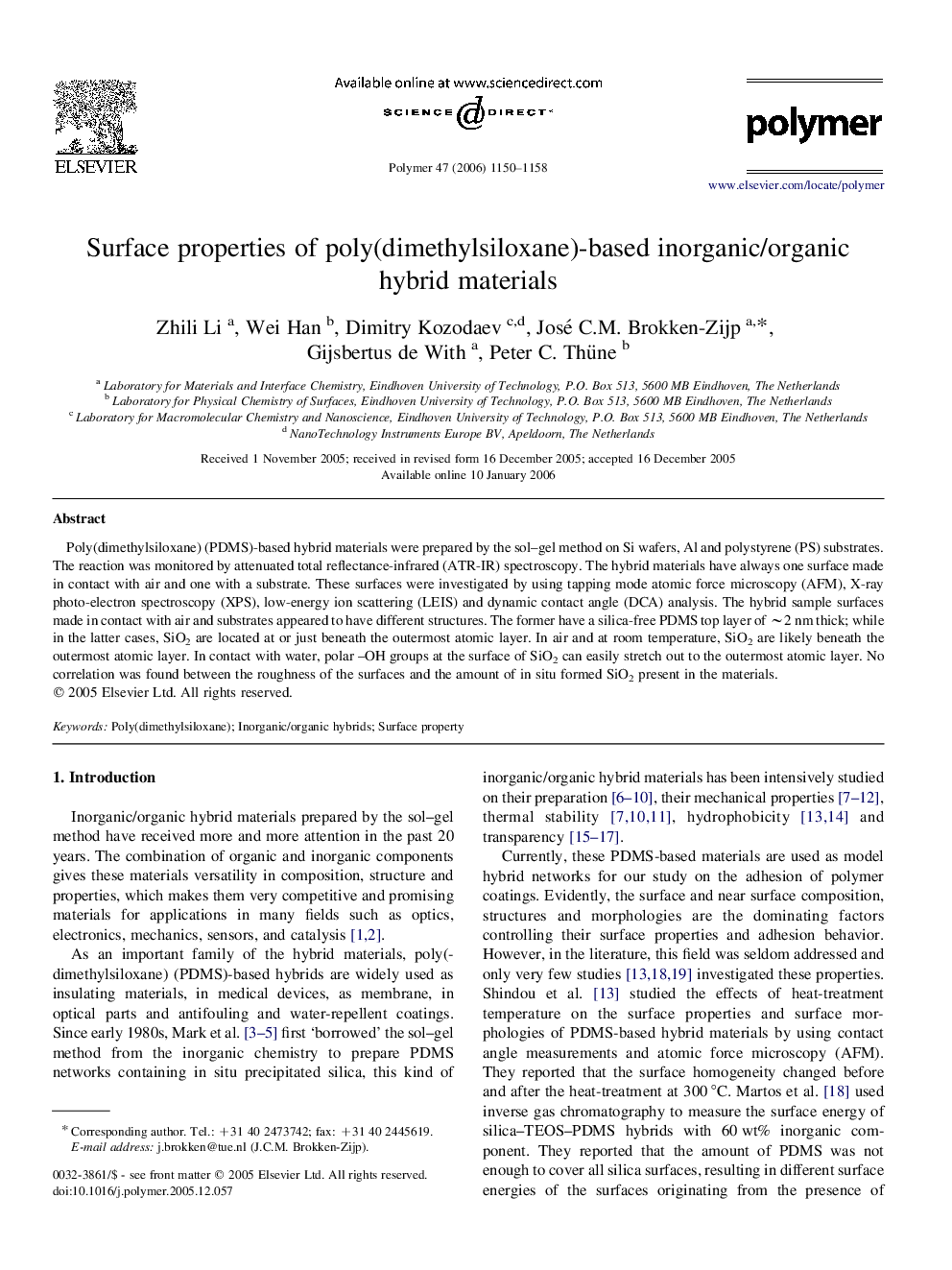| کد مقاله | کد نشریه | سال انتشار | مقاله انگلیسی | نسخه تمام متن |
|---|---|---|---|---|
| 5186509 | 1381106 | 2006 | 9 صفحه PDF | دانلود رایگان |

Poly(dimethylsiloxane) (PDMS)-based hybrid materials were prepared by the sol-gel method on Si wafers, Al and polystyrene (PS) substrates. The reaction was monitored by attenuated total reflectance-infrared (ATR-IR) spectroscopy. The hybrid materials have always one surface made in contact with air and one with a substrate. These surfaces were investigated by using tapping mode atomic force microscopy (AFM), X-ray photo-electron spectroscopy (XPS), low-energy ion scattering (LEIS) and dynamic contact angle (DCA) analysis. The hybrid sample surfaces made in contact with air and substrates appeared to have different structures. The former have a silica-free PDMS top layer of â¼2Â nm thick; while in the latter cases, SiO2 are located at or just beneath the outermost atomic layer. In air and at room temperature, SiO2 are likely beneath the outermost atomic layer. In contact with water, polar -OH groups at the surface of SiO2 can easily stretch out to the outermost atomic layer. No correlation was found between the roughness of the surfaces and the amount of in situ formed SiO2 present in the materials.
Journal: Polymer - Volume 47, Issue 4, 8 February 2006, Pages 1150-1158